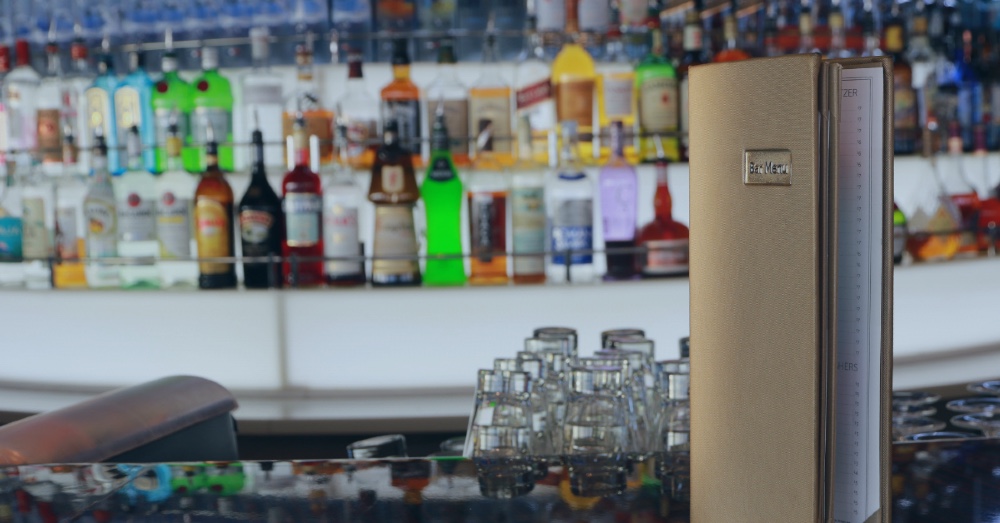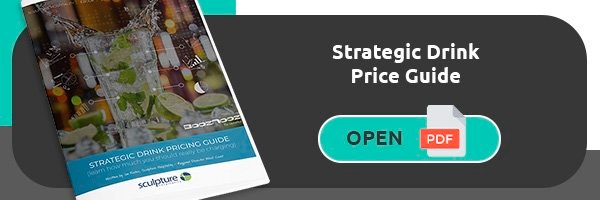Pricing the drinks in your bar can be tricky. Set your liquor prices too high and you run the risk of driving customers away, but set your drink prices too low and you may not be bringing enough money in to even cover your costs, especially if volume fluctuates.
There’s a fine line between a bar that’s too expensive and always empty, and a bar that’s completely full but way too cheap! Your pricing will depend on the type of bar you are managing and what your business costs are, but typically you are probably aiming for something that’s in between the two extreme examples above.
So, with that in mind, are you struggling to correctly price the drinks in your bar? How do you ensure your bar sets liquor prices correctly so that you can optimize how profitable your business is?
With a few pricing adjustments, and a slight shift in pricing strategy, most bars could significantly improve their profitability.
In this blog, Sculpture Hospitality has listed a few key tips that will help your bar shift to a strategic pricing strategy that uses bar inventory analysis and best practices to optimize the profitability of each drink.
Your 6-step process to pricing bar drinks
1 - Group liquor brands into different categories
The industry standard is to group brands of liquor into different categories, and then apply a standard markup for each category. Categories are typically well liquor, call liquor, premium liquor, wine (glass), wine (bottle), bottled beer and draft.
It’s best practice to charge more for your premium brands, since these customers typically won’t be scared away if the price is a few dollars higher than your competitors. On the flip side, those drinking well drinks or cheaper beer may be more money conscious and more likely to leave for another bar if your price is too high.
2 - Understand your bottle cost
Before even thinking about what your drink price will be, you need to fully understand the cost of your inventory. The best way to do this for liquor is to find the cost of each bottle per ounce.
The calculation for this is - bottle price / ounces in bottle = bottle cost per ounce.
3 - Determine your pour cost
Pour cost, also known as liquor cost, is the amount of the drink’s price that it costs to make the drink. For example, a drink with a pour cost of 20 percent means it has a profit margin of 80 percent.
You can learn how to calculate pour cost in our blog, Bar Inventory: What is Pour Cost Percentage and How is it Calculated?
4 - Calculate the total cost of liquor per drink
Find out what the cost of liquor is in each of your drinks, by multiplying the cost per ounce by the amount of alcohol in the drink. Typically, drinks will have between one to one and a half ounces of liquor in a drink.
To ensure your pricing strategy is accurate, make sure that your pour size is consistent for each of the same drink you make - different pour sizes could have a huge impact on how much profitability you are realizing in each drink.
5 - Factor in additional costs and unmeasured inventory losses
The key to any truly successful and profitable bar is a high-quality beverage inventory management solution that gives you insight into which products on your menu you are experiencing variance or “liquor shrinkage”. This is the difference between how much your bar spends on a product, compared to the usage amount cost on your point-of-sale (POS) system.
When you know where, and which products, your bar is experiencing variance, you can then strategically increase your drink prices to factor in additional costs and inventory losses.
6 - Evaluate your drink prices regularly
Buying stock in your bar is subject to price fluctuations. Internal processes can have an impact on how much variance your bar experiences, and customer demand for products can change. These factors all have a huge role to play in how profitable each of your drinks are.
To ensure your bar stays consistently profitable and optimizes each inventory item on hand, make sure to constantly analyze your bar’s performance and inventory data through the use of a beverage inventory management system.
Want to learn more?
Are you looking for more advice on how your bar can move from a simplistic liquor pricing model to a strategic model that uses data and analytics to determine how much you should be pricing your drinks?
If so, download Sculpture Hospitality’s free ‘Strategic Drink Pricing Guide’ today and learn everything you need to know about pricing your liquor, from upselling techniques, pour cost, wine pricing options and much more!





.png)




.png?width=520&height=294&name=Sculpture%20Blog%20Banner%20Images%20%5B2025%5D%20(2).png)
